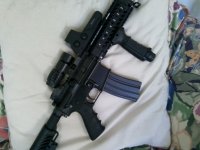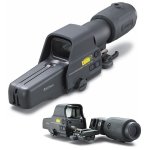First off I want to apologize if this is the wrong section for this topic.
I'm deploying to Afghan here in a few months and though I haven't gotten word on if i can bring my own gear, i'm planning ahead in case i can. Right now I got a M16 A4 with a M203 and a ACOG on it.
I know the ACOG is great for long range but in close range I'm not comfortable with the eye relief on the ACOG. I really don't like looking thru it when i got both eyes open. It just doesn't feel natural. I have never used red dot sights yet, so I'm hoping you guys can give me some advice on whether i should keep the ACOG on, drop the ACOG and put red dot sights on, or use both??? I've seen red dots mounted on ACOGs but I don't know how it feels or what other people think about it. Is it necessary?
I'm deploying to Afghan here in a few months and though I haven't gotten word on if i can bring my own gear, i'm planning ahead in case i can. Right now I got a M16 A4 with a M203 and a ACOG on it.
I know the ACOG is great for long range but in close range I'm not comfortable with the eye relief on the ACOG. I really don't like looking thru it when i got both eyes open. It just doesn't feel natural. I have never used red dot sights yet, so I'm hoping you guys can give me some advice on whether i should keep the ACOG on, drop the ACOG and put red dot sights on, or use both??? I've seen red dots mounted on ACOGs but I don't know how it feels or what other people think about it. Is it necessary?


